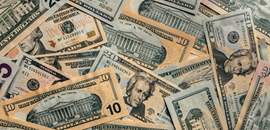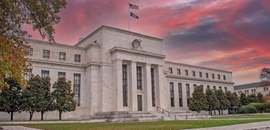However, the latest forecasts of Fed officials indicate that most believe rates will need to be raised by 50 basis points, and the median expectation is the terminal rate will be about 5.6 percent. At his press conference, Jerome Powell indicated that the Fed remains committed to bringing inflation down to its 2 percent average annual target. The Fed’s projections call for the economy to grow at 1 percent this year, with core CPI inflation expected to moderate to 3.9 percent from 5.3 percent in May.
For some time now, investors have been anticipating the Fed would pivot later this year. For example, until recently, the Treasury market had been pricing in that the funds rate would peak around 5 percent and then decline to 4.25 percent by year-end. Following the strong job report for May, however, bond investors accept that the Fed might not lower rates this year and could raise them in July.
By comparison, many stock investors still cling to the view that the economy and inflation will soften and allow the Fed to lower rates. The S&P 500 Index reached its highest level in more than a year this week and it is up by about 20 percent from its low in October. This defies one of the oldest Wall Street adages — “Don’t Fight the Fed!”
Why Have Equity Investors Been Ignoring the Fed's Assessment?
A recent Brookings study by Ben Bernanke and Olivier Blanchard, former chief economist of the IMF, presents a nuanced view of what caused the spike in inflation. The authors conclude it wasn’t the pandemic or fiscal stimulus by themselves. Rather, inflationary forces started with the pandemic and were subsequently exacerbated by fiscal stimulus. One of their main findings was that “sectoral mismatches between aggregate demand and supply proved more intractable than many expected.”
Economist Mickey Levy of Berenberg Capital Markets observes that the Fed’s views of interest rates were inconsistent with its own projections of inflation. In a paper presented at the Hoover Institution, he noted that in December 2021, when inflation had risen to 5 percent, the Fed estimated the appropriate policy rate was 0.9 percent by year-end 2022 and 1.6 percent in 2023. Levy observes, “the Fed estimated that maintaining the Fed funds rate well below the inflation it projected would reduce inflation sharply in 2022 and 2023.”
The same can be said of many investors. For example, when the Fed began to raise rates, the bond market was pricing in only four quarter-point rate hikes for 2022 to 1 percent.
What Explains the Economy's Resilience to Rate Hikes?
However, consumer spending, which accounts for nearly 70 percent of overall spending, has returned to its pre-pandemic growth path after plummeting in 2020. In addition to an unprecedented fiscal stimulus that boosted household savings by $2.7 trillion, the key factors supporting consumer spending are that jobs are readily available and wages have increased.
Weighing these considerations, my take is that the Federal Reserve made the correct decision to pause at the June meeting. With the funds rate at 5 percent-5.25 percent and both consumer and producer inflation on a downward path, interest rates are now positive in real terms. A pause will give policymakers time to assess whether core inflation, which is running at about 5 percent, will also subside. If it stays elevated, Fed officials could opt to tighten it at the July FOMC meeting.
In the end, it will not make much difference to the economy if the terminal rate is around 5 percent or 5.5 percent. The main risk to the markets would occur if core inflation does not slow materially such that the Fed would be compelled to boost rates well beyond 5.5 percent: This outcome is not priced into markets and could force investors to throw in the towel about an easing in monetary policy.
A version of this article was posted to TheHill.com on June 16, 2023.
This publication has been distributed for informational purposes only and should not be considered as investment advice or a recommendation of any particular security, strategy, or investment product. Opinions expressed in this commentary reflect subjective judgments of the author based on the current market conditions at the time of writing and are subject to change without notice. Information and statistics contained herein have been obtained from sources believed to reliable but are not guaranteed to be accurate or complete. Past performance is not indicative of future results. No part of this publication may be reproduced in any form, or referred to in any other publication, without express written permission of Fort Washington Investment Advisors, Inc.



























